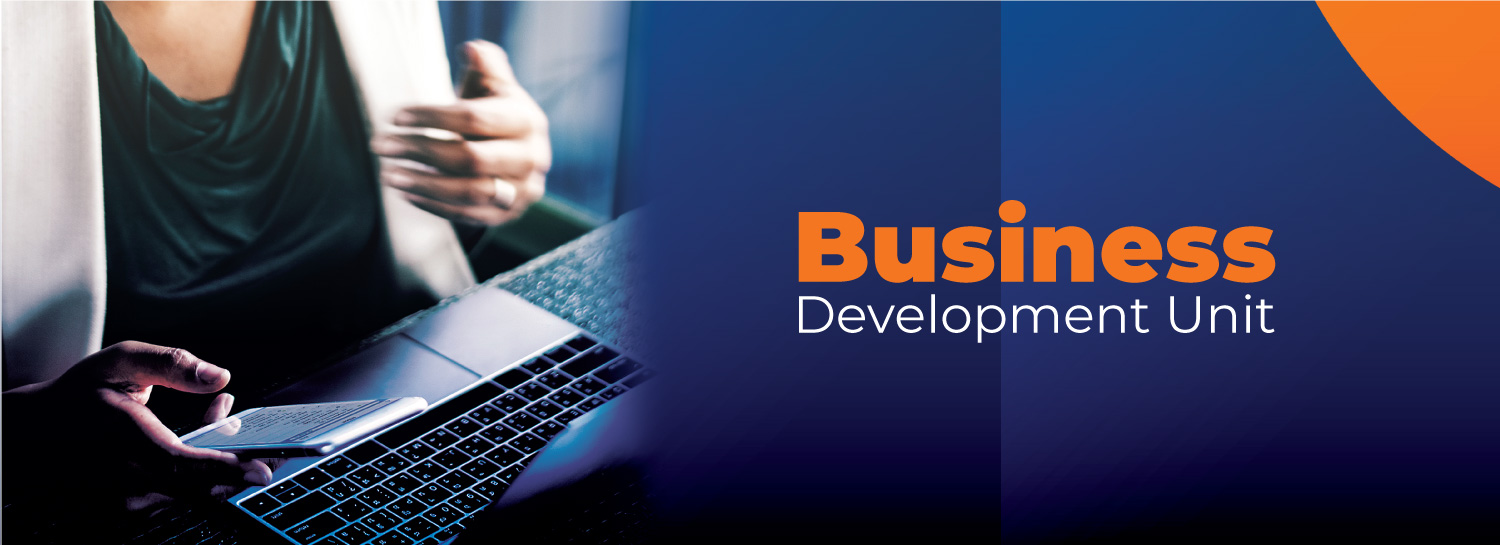Business Development Unit

Who Are We?
Our team consists of highly experienced project managers, developers, strategists, software analysts and designers who have received impressive feedback for effective execution of projects within their deadlines. Our dynamic team environment has been servicing and providing solutions for the Belizean market, for medium to small business enterprises in the area of telecommunications and various developments in several other areas.
What Do We Do?
The Software Development Unit undertakes a variety of innovative software projects. Our team consists of a mixture of highly skilled software developers, analyst and designers with several years of experience that combined produces a team dedicated to develop software solutions and specialized systems in many different areas for different costumers sizes, ranging from desktop applications, back-end systems, middle ware and front end software including mobile applications using a wide variety of technologies on different platforms such a clouds, mobile, desktops and servers.
Success Stories
Smart App, Accounting systems, CRM’s, internet of things, surveillance systems, marketing analytics.
A customer loyalty program is a marketing tool that recognizes and rewards customers who purchase or engage with a brand on a recurring basis.
The benefits of customer loyalty programs include:
Better customer retention: Today, customers are making purchasing decisions not just on price, but on shared values, engagement, and their overall experience of your brand.
More customer referrals: If your customers enjoy the benefits of your customer loyalty program, they’ll tell their friends and family about it.
Cost efficiency: It’s more cost-effective for your business to retain happy customers than it is to consistently churn and acquire new ones.
User-generated content: Programs that encourage happy customers to publish reviews and ratings on websites and social media create authentic ambassadors for your brand.
A ticketing system is a customer service tool that helps companies manage their service and support cases. Each ticket documents customer requests and interactions over time, making it easier for customer service reps to resolve complicated issues.
The more customers that you have interacting with your business will lead to a higher volume of customer support and service cases. Hiring more customer service staff can quickly increase your expenses, and by not doing so this puts more pressure on your team to multi-task and resolve problems simultaneously. Adding a ticketing system is a great way to overcome this roadblock as it provides scalable solutions for your customer service reps.
A chatbot is a software that simulates and processes human conversation allowing humans to interact with digital services as if they were communicating with a real person.
Chatbots boost operational efficiency and bring cost savings to businesses while offering convenience and added services to the business and customers. They allow companies to easily resolve many types of customer queries and issues while reducing the need for human interaction.
With chatbots, a business can scale, personalize, and be proactive, which is an important differentiator. When relying solely on human power, a business can serve a limited number of people at one time. To be cost-effective, human-powered businesses are forced to focus on standardized models and are limited in their proactive and personalized outreach capabilities.
By contrast, chatbots allow businesses to engage with an unlimited number of customers in a personal way and can be scaled up or down according to demand and business needs. By using chatbots, a business can provide humanlike, personalized, proactive service to millions of people at the same time.
There are four types of mobile apps an organization can choose from to build its enterprise mobile application: web app, hybrid app, native app, and progressive web app.
A web app runs on an internet browser. Web apps are easy and quick to build. However, they cannot leverage device functionality and lack the enhanced user experience. Unlike native apps, a user cannot have a shortcut to a web app on their home screen, instead, they access it through a web page or a URL, just like a website.
A hybrid of native and web apps, hybrid apps offer a middle ground between a native app’s superior features with a web app’s development simplicity. Hybrid apps are written in languages like HTML, CSS, or JavaScript, and using technology like Cordova or PhoneGap for packaging so that one app can run across multiple platforms or OSes.
Built for either Apple’s IOS or Google Android, native apps are coded for the chosen OS. An app for Apple would be written in Swift or Objective-C, while Google’s app will be in Java. Since these apps are platform/OS-specific, they can integrate seamlessly with device features like camera, GPS, and contacts and offer far better user experience with sophisticated micro-interactions like infinite scroll and subtle animations. Native apps are quick to load and can be written to offer offline access. These apps are highly customizable and usually have the best performance.
A progressive web app (PWA) is a new generation of web apps. PWAs can be built in languages like HTML, CSS or JavaScript and are distributed through URLs instead of an app store. While not as customizable as native apps, PWAs offer native device functionality like push notifications, download an icon on the device screen, and the ability to work offline through Service Workers
Software that facilitates a transaction by communicating transaction information and in this sense of the word applies to the equivalent of a physical point of sale that is located in retail outlets.
A payment gateway authorizes the payment by credit cards for online retailers, brick and click stores, traditional stores, and for ecommerce ventures. The payment gateway protects the details on a credit card by encrypting the sensitive information it holds. This process ensures that personal private details are passed securely between the customer and the merchant.
A payment gateway is part of the “magic” that occurs in the background when a credit or debit card transaction takes place. By sending information securely between the website and credit card network for processing and then returning transaction details from the payment network back to the website it is a primary component that enables ecommerce to function.
If you have a website and are interested in accepting credit card payments either online or through a mobile device you will need a payment gateway. It is the bridge between your product sales and your customer.
There are any number of providers that can setup a payment gateway for you, so how can you choose the right one for your business? The first step is to research features and when you’re doing this consider the following:
EMS currently has two major components, HRM and Procurement.
The HRM component is designed to automate Speednet’s human resource business processes and policies. This system allows HR and Management to focus on people management by streamlining HR processes into one business intelligent solution. It integrates onboarding, workforce management and leave scheduling and management. We are currently designing the payroll component that will take our HRM to the next level.
The procurement component is a solution that allows tracking of all our suppliers and acquired equipment and services from start to finish.
